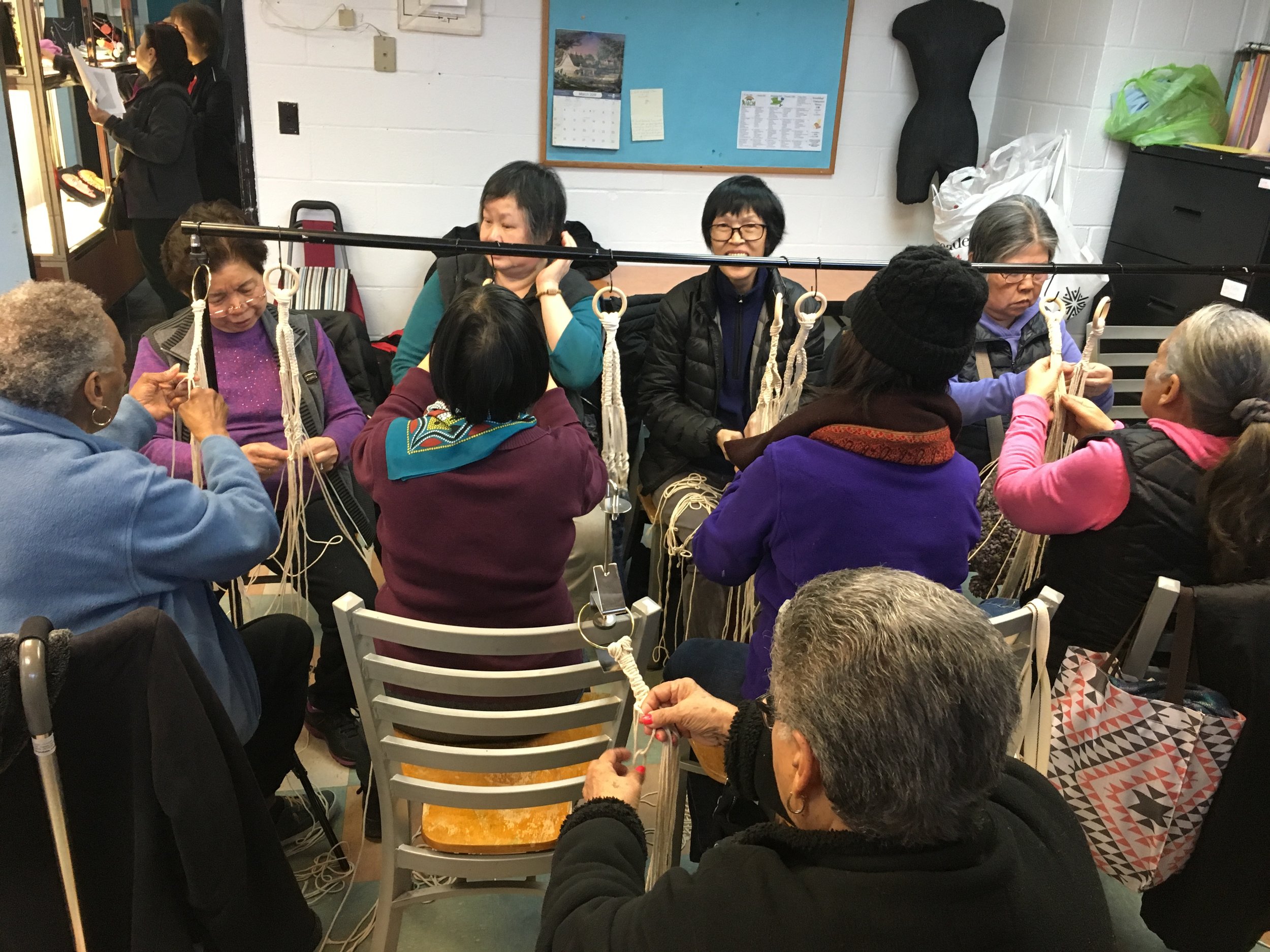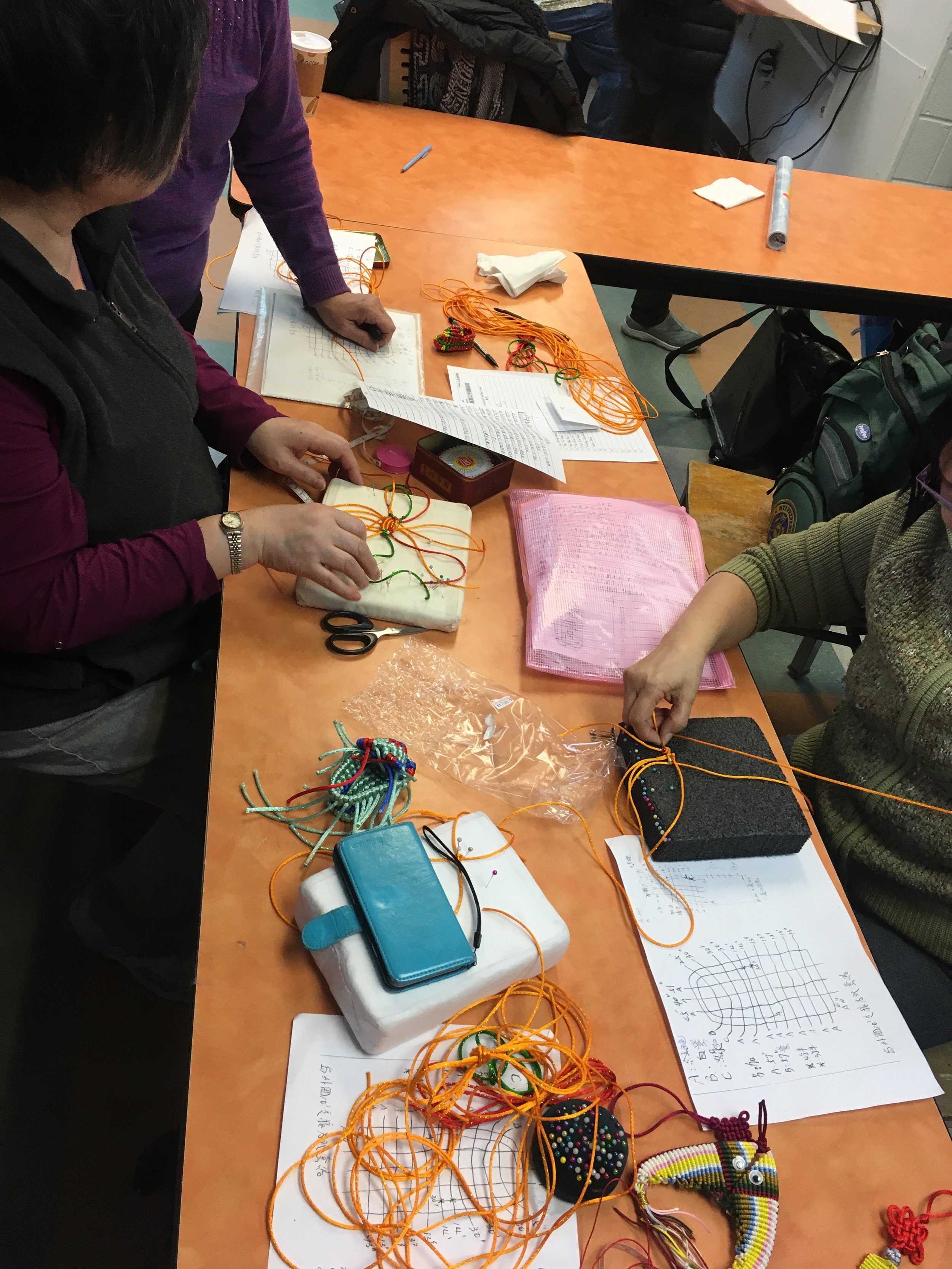My main art form used to be printmaking, but about four years ago I started weaving at Artspace DC. I was initially interested in weaving because I wanted to figure out how to make my own fabric. I was designing clothes at the time and I was frustrated that I couldn’t get medium-sized quantities of fabric, but instead either a few yards or a few thousand yards of fabric. I looked up ‘weaving classes’ on Google and magically there was a fiber arts class near my house at the time, which was in the Shaw neighborhood in Washington DC. I started going every week and feel in love with weaving and my fellow classmates. I quickly realized I probably would not be making my own fabric any time soon, but it didn’t matter.
Weaving became a kind of therapy for me — the class and our teacher created a nurturing and supportive community for me and the practice got me back into thinking about, and eventually making, art. Every week I would go face the loom. Sometimes it would be frustrating and sometimes it would be exhilarating; usually it was both. Little by little I learned the basics of weaving and it became a necessary part of my life. I worked on a floor loom, a frame loom, an inkle loom, and a table loom.
I started learning about weaving in different cultures, including Zapotec weaving and took a trip to Oaxaca, Mexico. Later, I dreamt up a self-guided residency made up of different natural dye workshops, weaving workshops, and embroidery workshops in Oaxaca. I saved up money and did it. This also coincided with me quitting my job and starting my own company, Distill Creative, but that’s another story.
I think the fiber arts class I took on a whim started a whole chain of events that eventually led to my current life: running my own company and pursuing art. And now I have this amazing art residency to share my love of fiber arts!
I miss my fiber arts group in DC a lot, but I am very happy that I can create with a new group of students, the seniors at Grand Coalition of Seniors.





















